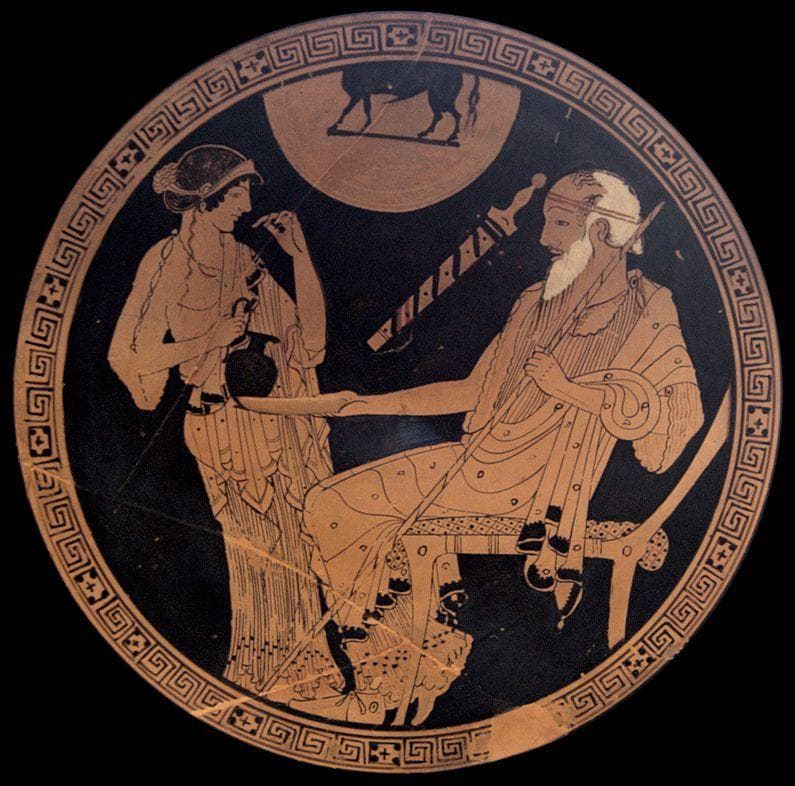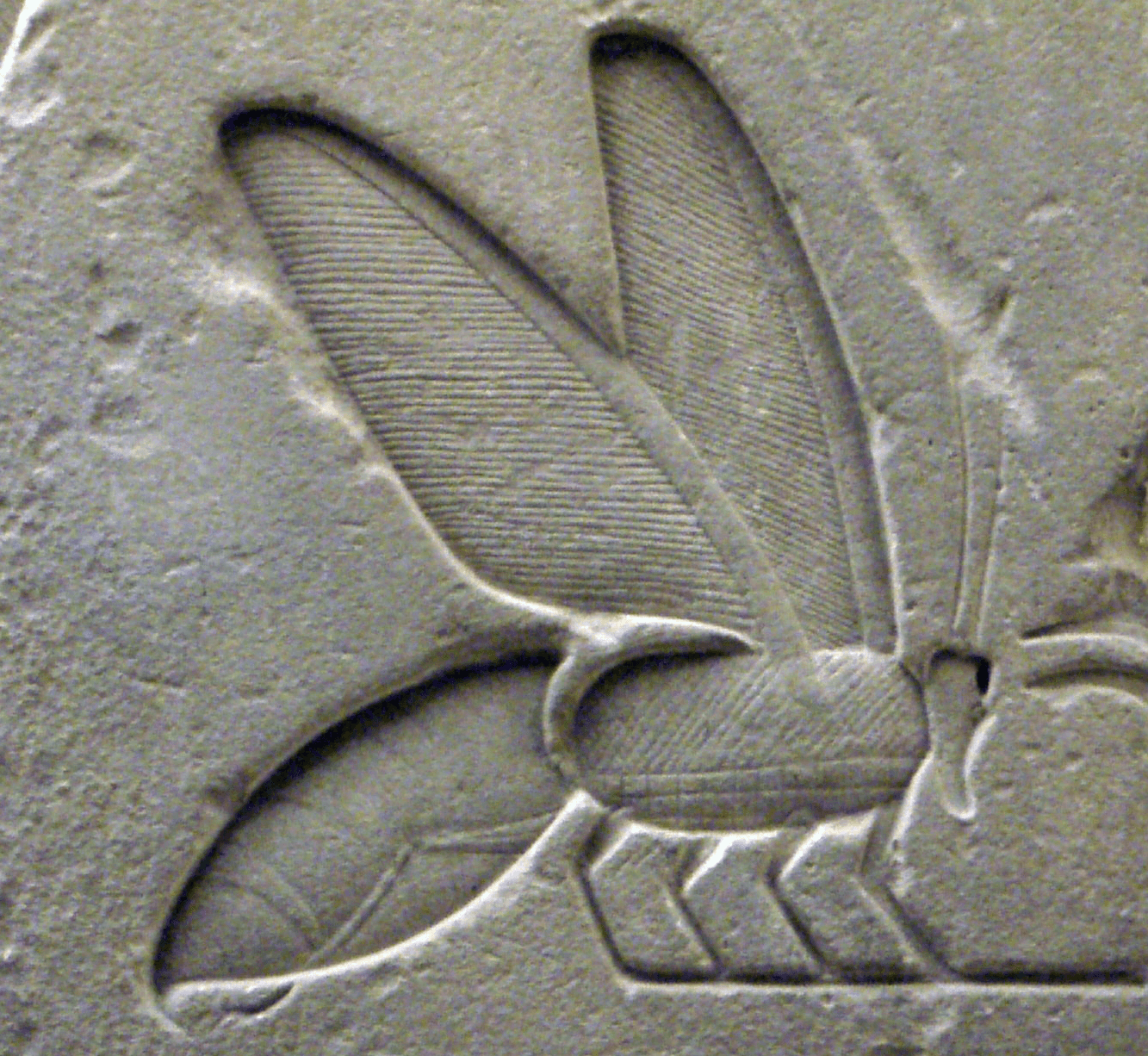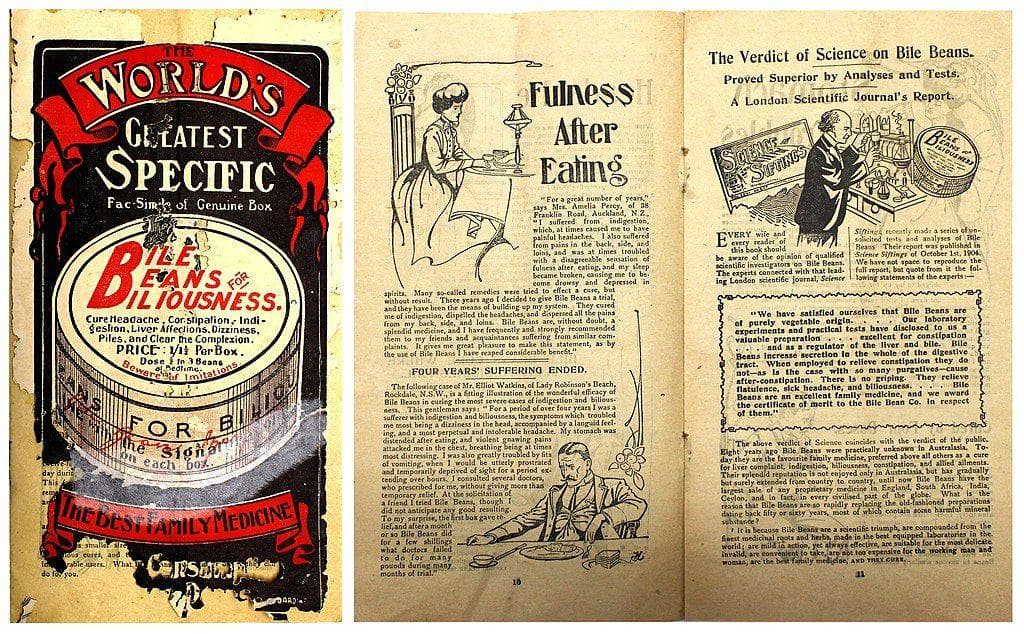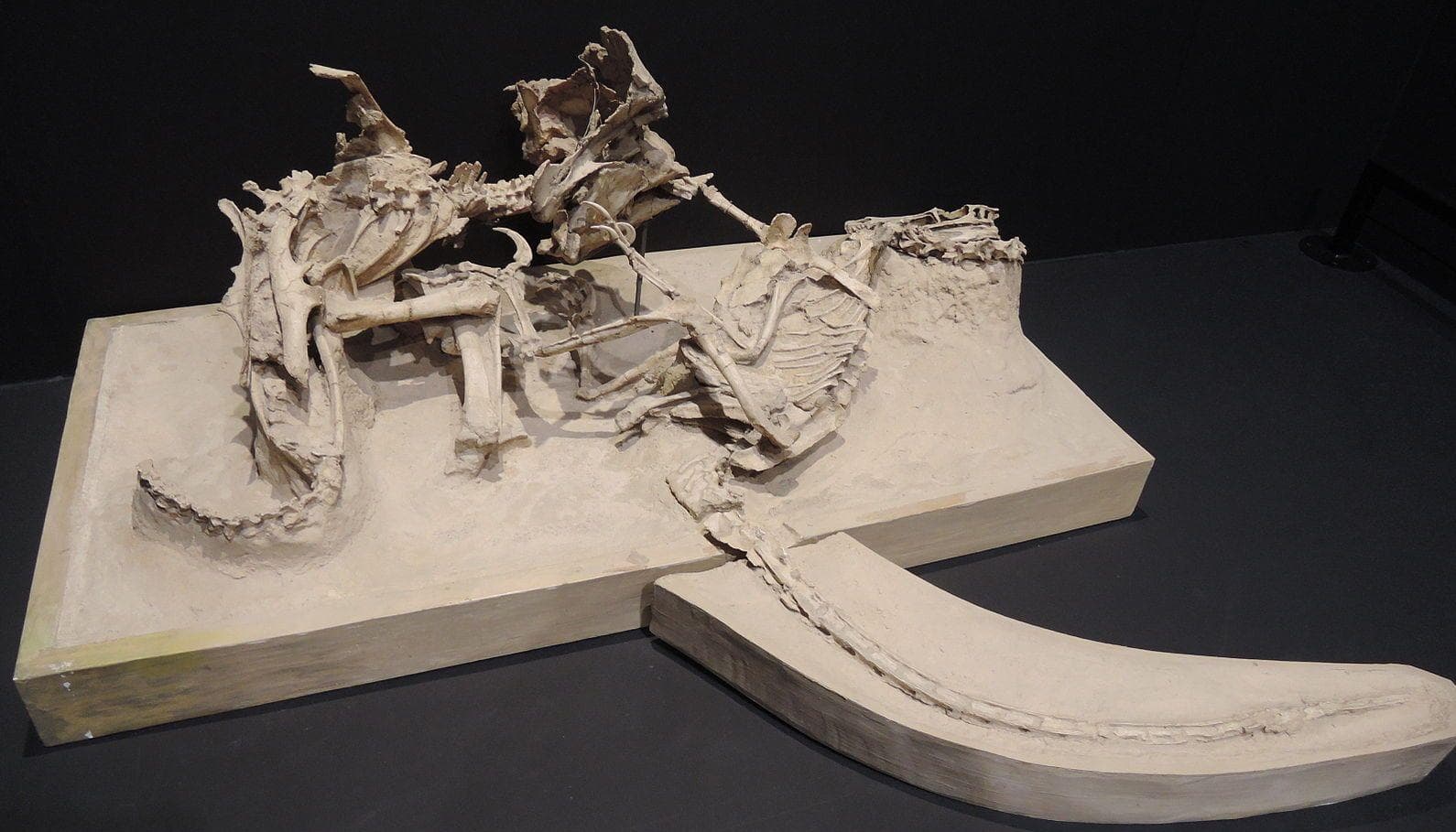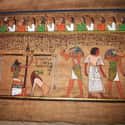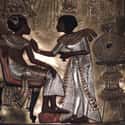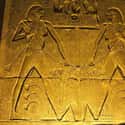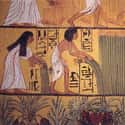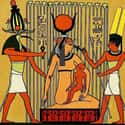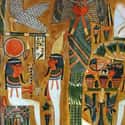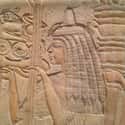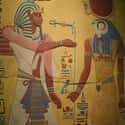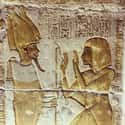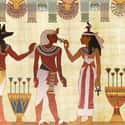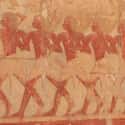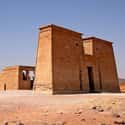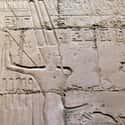-
(#1) Men And Women Shaved Their Heads To Prevent Lice
Parasites like lice tormented ancient Egyptians so badly, they took drastic measures to keep the bugs from living on their bodies. In order to limit the places lice could live, people removed all their hair using knives, razors, and tweezers. They wore wigs made of real human or horse hair over their shaved heads. The wealthy often owned several styles they could wear on different occasions. If lice managed to infest the wig, it could easily be thrown out.
Wigs also served as a way to keep cool in hot weather. However, because those with less money couldn't afford nice wigs, members of the lower classes often wore head coverings instead of wigs or made wig-like creations from papyrus. Despite these efforts, no one could completely escape the problem; researchers have discovered several mummies infested with lice.
-
(#2) They Used Deodorant To Help Curb Body Odor
Since using Secret wasn't an option, ancient Egyptians turned to plants and other natural substances to keep their body odor in check. They ground herbs, flowers, and roots into a paste, which they combined with oil to make a cream to apply to their armpits. Historians discovered recipes for deodorant substances which called for nuts, crushed tortoiseshell, and ostrich eggs, as well as mixtures of porridge and resins.
Deodorants weren't only applied to the armpits, though; some women added scents to wax which they spread on their head. As the sun and heat melted the wax, the scent released like a primitive aromatherapy diffuser. Although many of these primitive deodorants were unscented, some recipes included cinnamon or frankincense for a pleasant smell.
-
(#3) Mints And Chewed Herbs Kept Breath Smelling Fresh
Since fresh breath was important to the ancient Egyptians, they made sure they always had access to methods of relieving bad breath. They often chewed on herbs like parsley during the day or after meals.
Egyptians also used the equivalent of breath mints, which they either made themselves or purchased pre-made. The mints combined fragrant spices and herbs, such as cinnamon and frankincense, with cashews and pine seeds. Honey bound the ingredients together and was then heated with fire to form candies. Historians believe some of the dishes found in ancient Egyptian homes may have been candy dishes used to store these mints.
-
(#4) Men Practiced Circumcision For Cleanliness
Several historical examples of circumcision exist within ancient Egyptian culture, including sculptures and images on the walls of tombs. Although the practice may have continued for other reasons, some historians believe this practice started as a desire for cleanliness. Inscriptions found in temples and tombs led researchers to believe uncircumcised men were not allowed to enter, as they were deemed impure.
Eventually, the practice evolved into rituals involving religious ideas. While circumcision only affected men, women underwent their own rituals for cleanliness and sexual health. Many women developed the practice of removing their pubic hair, either by shaving or experimenting with other natural forms of hair removal. Women believed this practice readied them for intimacy, as well as helping to repel lice and fleas.
-
(#5) People Relieved Themselves Outdoors, As Only The Wealthy Owned Toilets
Many of the toilets owned by wealthy Egyptians featured seats made of limestone. The stone sat on top of a box filled with sand, which someone had the unfortunate job of emptying. Those who could not afford such luxuries relieved themselves outdoors, often in a hole they dug in the ground. A large number of people used the Nile as their bathroom, despite the fact people also used the river's water to drink, bathe, and wash their clothes.
Since ancient Egyptians had no sewage system, waste and other garbage often wound up in pits, open fields, or canals, contaminating the river and fields where people grew their food. Despite the Egyptians' efforts towards cleanliness, disease due to unsanitary conditions and vermin, parasites, and insects took many lives each year.
-
(#6) Cosmetics Were Applied Daily For Health And Aesthetic Purposes
Since they provided other benefits besides beauty, cosmetics were used by both men and women in ancient Egypt. After smoothing their skin with oils and face masks of honey or aloe, people applied eyeshadow, mascara, and eyeliner. Eyeliner was popular not only as a beauty statement; the kohl people used to line their eyes also protected their eyes from the sun's glare and repelled flies.
To make these cosmetics, people ground natural elements such as malachite and galena into a powder, mixed it with fat to create a cream, and then stored the cosmetics in pots. While the wealthy owned decorated pots made of fine materials, the lower classes used simple, cheaper materials to make containers for their cosmetics.
-
(#7) They Used Laxatives And Enemas To Cleanse Their Bodies
As demonstrated through their elaborate mummification process, ancient Egyptians were curious about the body and strived to know more about human health. While many doctors also functioned as priests and often attributed sickness to offending the gods, doctors also practiced medicine. They encouraged the use of purgatives or laxatives to help clean the intestines.
Practiced by many Egyptians three days a month, laxatives were believed to help rid the body of disease. They used castor oil to force waste out of the body, even when they attempted to cure diarrhea. Egyptians also used enemas to cleanse their interiors and employed proto-proctologists to examine their anuses.
-
(#8) Only The Very Wealthy Had Indoor Bathing Facilities
The average Egyptian took a bath or shower every day; however, the methods they used to do so depended on their social class. The wealthiest Egyptians had places to bathe inside their homes. Standing on a stone slab, bathers had basins or jugs full of water carried from the Nile poured on them by their servants. Some upper-class homes had foot baths made of wood, stone, or ceramic which they used to clean their feet since many people didn't wear shoes.
Egyptians used a natural substance called natron as soap and slathered themselves with moisturizing creams after they bathed to keep their skin soft. Members of the lower classes, which included most of Egyptian society, bathed themselves in the Nile itself.
-
(#9) Perfumes Were Made From A Variety Of Ingredients
Ancient Egyptians valued smelling nice and created a variety of perfumes to help them achieve this. Using oil as a base, people added fragrant spices and herbs including cardamom, mint, and juniper. Fragrances sometimes featured foreign ingredients, using scents imported from surrounding areas. A perfume called kyphi became the most prized and expensive of the ancient Egyptian perfumes and it served as an indicator of wealth.
Members of the lower class could not afford most perfumes, so they sometimes ground and combined roots, herbs, and flowers to make less expensive fragrances. In addition to wearing scents, Egyptians turned the same fragrant materials into incense cones, which they burned for themselves and their gods.
-
(#10) People Washed Their Clothing In Parasite-Infested Water
Although people wore very little clothing through much of Egyptian history, those in later periods adopted larger wardrobes and demanded that what they wore be clean. Clothing was usually made from linen. Because the fabric's color was white, garments showed dirt very easily. This required laundry to be done more often, and it was not an easy job. Clothing had to be beaten, rinsed, twisted, and soaked by hand in order to remove dirt; because of the labor involved, Egyptians gave the task of doing the laundry to men.
While the wealthy hired others to do their laundry and made use of special facilities, the lower classes had to use the Nile River to wash their clothes. Many people also used the river to dump garbage and relieve themselves, so this water was filled with parasites and other things that caused diseases. Doing laundry in the river also meant there was danger of being harmed or slain by hippos or lurking crocodiles.
-
(#11) Toothbrushes, Toothpaste, And Dental Work Were Used On Teeth
In order to clean their teeth, ancient Egyptians ground natural materials like salt, flowers, and mint into a powder. As they brushed this over their teeth using their fingers, it mixed with saliva to form a paste. Egyptians eventually created a toothbrush using a stick bound with thin strips of plants as bristles.
Although they didn't have to worry about substances like sugar decaying their teeth, an abundance of sand meant Egyptians often got some in their mouth, which helped wear down their teeth. Historians discovered evidence of dental practices, including fillings and keeping loose teeth in place with splints. Several mummies also had bridge work done using teeth that were not their own, but it's difficult to tell if the dental work had been completed during their life or after.
-
(#12) The Wealthy Employed People To Give Them Manicures
The wealthiest Egyptians employed others to keep their fingernails looking healthy and clean. The upper class and royalty hired manicurists, who used files and small knives to trim and clean their toenails and fingernails. Manicurists held a special place in society and made sure to prominently label their tombs with their job title after they passed. People also used a primitive form of nail polish, using henna to color their nails orange and yellow.
While they couldn't afford to hire others to take care of their hands and feet, the lower classes didn't necessarily have to live with dirty, ragged nails. Historians believe members of the lower classes probably took care of their fingernails and toenails in a similar fashion using less expensive tools. Regardless of class, taking care of one's feet was important since most people went barefoot and needed to use creams and ointments to keep them from cracking or attracting insects.
-
(#13) They Applied Sunscreen And Moisturizers After Bathing
Since Egypt is a sunny, hot place, ancient Egyptians took care to preserve their skin. After bathing, people applied animal byproducts such as tallow, which helped moisturize skin due to the fat content. They also used plant products like linseed or castor oil and added honey to help diminish the appearance of scars and retain their youthful appearance.
Many of the ingredients Egyptians used in their creams acted as sunscreen, along with the added benefit of repelling insects like sand flies. While the wealthy could buy creams and oils premade at the market, those who couldn't afford them made their own at home with easily accessible ingredients.
-
(#14) Food Preparation Took Place On The Floor And Used Contaminated Water
Ancient Egyptians depended on the Nile River for many things, including their bathing and drinking water. Because it often flooded, the Nile also created fertile soil for growing food along its banks. However, since many people used the fields and the Nile itself as a bathroom, disease and other contamination often came into contact with the soil and food.
In lower class households, this contamination of food also included preparing meals on the floor, such as milling grains to make bread. People prepared food in open air rooms or on the roof if their homes didn't have kitchens, and vermin often infested homes and areas where food was kept. Once they finished eating, people washed their dishes with the dirty Nile water and disposed of their garbage outdoors.
-
(#15) They Built Towers To Escape Mosquitos
Ancient Egypt was plagued with mosquitos and residents took measures to prevent themselves from being bitten. In some cases, those in the "upper parts of the marshes" would build towers around their sleeping rooms because the wind prevented mosquitos from flying high enough to infiltrate the barrier.
Other preventative tasks included wrapping themselves in a net as they slept. Apparently every man had a net he'd use to fish during the day, and at night they would wrap it around their bed and sleep under it. Where mosquitos would still attempt to bite through linen and cloth, they would leave the nets alone.
-
(#16) Women Used Ember And Barley To Test For Pregnancy
Women physicians would test fertility with an early pregnancy test which required urinating on a combination of barley and ember. If neither the barley nor the ember grew, she was not pregnant; if the barely grew, she was pregnant with a boy; if the ember grew, she would bare a girl.
This test is, in fact, fairly effective. In the late 20th century, researchers attempted to validate the technique and found that more than half of the tests performed by pregnant women saw the barley or ember grow; where every test performed by a male or non-pregnant female saw no growth.
Though this is not the only method of fertility testing employed in ancient Egypt, it is perhaps one of the most effective.
New Random Displays Display All By Ranking
About This Tool
Nowadays, humans are still obsessed with studying the extraordinary contributions made by the ancient Egyptians to the progress of human civilization. The famous historian Herodotus recounted that the ancient Egyptians ensured that their cups, utensils, and bodies were cleaned every day. Linen clothes were popular in ancient Egypt because they were easy to clean and comfortable. They believed that cleanliness is better than beauty and also knew how to use mint to refresh their breath.
According to historical records, deodorant was invented in ancient Egypt. People invented deodorant by mixing various spices, such as citrus and cinnamon. The random tool introduced 16 detailed information about hygiene in ancient Egypt.
Our data comes from Ranker, If you want to participate in the ranking of items displayed on this page, please click here.

